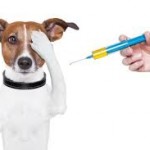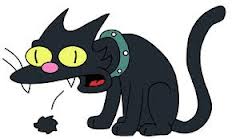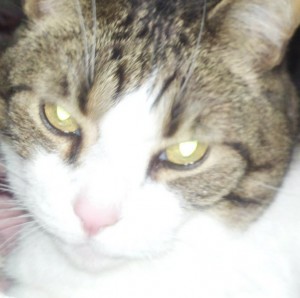Canine Vaccinations..Debunking the Myths, Reporting the Facts ☆
 One of the most misunderstood subjects in the world of dog ownership has to be that of vaccinations. Most pet owners rely on their veterinarians to provide the information needed to make the correct decision in regards to this very important subject.
One of the most misunderstood subjects in the world of dog ownership has to be that of vaccinations. Most pet owners rely on their veterinarians to provide the information needed to make the correct decision in regards to this very important subject.
Unfortunately, according to immunology expert Dr. Ronald Shultz DVM, veterinary students are not given a complete education in immunology. The information they are given in college is provided by the vaccine manufacturers. You would think that since the manufacturers are providing the information that it would be the most thorough, accurate information available on that particular vaccine, and it is, to a point.
The one area that is usually not divulged at length is the instance of adverse reactions and other health related concerns that have been attributed to these vaccines. Most conventional veterinarians in the United States follow a yearly vaccination protocol. Their offices send out reminder cards in the mail to remind pet owners of the need to vaccinate their pet. The vaccines that are routinely “boosted” yearly are typically vaccines for Parvovirus, Distemper and Adenovirus. Some veterinarians use what we call “combo-whombo” vaccines that not only contain the typical three, but also have other vectors included such as coronavirus and leptospirosis.
Vaccinations are broken down into two groups, core vaccines and non-core vaccines. The core vaccines, Parvo, Distemper and Adenovirus, are the ones that are recommended for the general pet population. The non-core vaccines such as, Leptospirosis, Coronavirus and Lyme, are only recommended in certain instances where, geographically, your pet might be exposed to a certain vector that is not found in other areas. Non core vaccines usually only have a duration of one year or less. Dr. Shultz does not recommend using Leptospirosis vaccine on any small or toy breeds because of the high instance of serious adverse effects in those dogs.
The Lyme disease vaccine is only 50-60% effective, so this too is really not recommended until the vaccine company improves its efficacy. Coronavirus is not found in our area, the northeast, so that is also not recommended. Any of the vaccines, core or non-core, are not mandatory vaccines. The only vaccine that is mandatory, by law, is the Rabies vaccine which is given every three years.
The main thing that all pet parents need to realize is that vaccines do not come without risk. Whenever anything is injected into the body there is a risk of that vector causing an adverse reaction. This is especially prudent when you are introducing a foreign material that is meant to directly stimulate an immune response. The adverse reactions caused by vaccines can be as profound as having the animal die immediately after administration or they can be as subtleas the animal displaying symptoms such as lethargy, loss of appetite, hair loss, & itching. These more subtle reactions are usually seen from minutes after vaccination to months after vaccination. Since some of them don’t materialize until weeks or months later, they are usually contributed to “allergies” when presented to the veterinarian.
What every pet parent has to know is that the core vaccines have been proven to last a lifetime for most animals. As long as they are given at the correct intervals initially, the animal does not need to get “booster” shots at any time after the initial series of shots. The best way to tell if your pet is immunized and protected by the vaccinations is to have a titer test done. Titer testing is a simple procedure where your veterinarian will draw some blood and send it out to the lab to measure the antibody levels present in the blood sample. As long as there are antibodies present, your pet does not need any more shots. The  antibody level does not go down over the course of the animals life.
antibody level does not go down over the course of the animals life.
Although there is no need, for any pet owners that want to re-check the antibody levels, instead of taking your pet for “booster” vaccinations you can take him for a re-check of the antibody levels periodically throughout your pet’s life. By titering instead of over vaccinating, you can be assured that you are providing the correct care to help keep your pet happy and healthy for years to come. As Dr. Schultz says “Vaccinate but vaccinate Wisely!”
Until next time my furry followers!








Leave a Reply